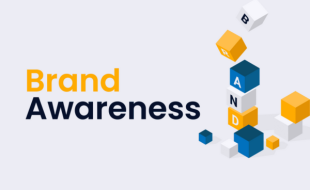Table Of Contents
- What Are The Ways You Can Perform Credit Card Fraud Prevention?
- 1. Strong Card Security Starts with Controlling Access
- Quick examples of access controls that help:
- 2. Strong Password Habits Block Unauthorized Account Entry
- 3. Monitoring Patterns and Alerts Helps Catch Fraud Quickly
- Alerts worth enabling on day one:
- 4. Online Shopping Safety Reduces Exposure Points
- 4. Acting Quickly Limits Damage When Fraud Occurs
How To Prevent Credit Card Fraud [5 Actionable Steps]
Credit card fraud can create financial strain and interrupt everything from automatic bill payments to simple purchases that you rely on every week.
You may not spot the damage until a bank flags unusual activity or a bill reveals charges that make no sense.
Stopping fraud before it happens comes from steady habits that block unauthorized access and make theft harder.
In this blog, I am going to discuss the five basic steps that will help you maximize your chances of credit card fraud prevention.
What Are The Ways You Can Perform Credit Card Fraud Prevention?
You can perform credit card fraud prevention through a combination of vigilant account monitoring, secure handling of your physical card and sensitive data, and by leveraging security features offered by your bank.
1. Strong Card Security Starts with Controlling Access
Fraud occurs when someone gains access to your number, security code, card details stored online, or direct account credentials.
Keeping card details protected limits other risks and gives you more control over how your accounts operate.
Handle Card Details Carefully
Treat card numbers, expiration dates, and security codes as sensitive information. Avoid entering card details on shared devices or public Wi-Fi, and use private logins on your phone or home computer.
Sensitive data stays safer on devices you use, reducing exposure during routine purchases.
Keep Physical Cards Secure
A card stored loosely in a bag or car creates an unnecessary opening for theft. Storing cards in a consistent location at home, using a secure wallet, and checking for a card’s presence before leaving a store all reduce the likelihood that a missing card goes unnoticed.
Use Account Permissions Wisely
Plenty of banks offer the option to lock a card, set spending limits, or limit where charges can be processed, which can protect your account during travel or anytime a card feels less secure.
Quick examples of access controls that help:
- Temporary card lock after a misplaced wallet
- Travel restrictions during out-of-state trips
- Spending caps that stop unusually large charges
Access control helps stop fraud before it starts because fewer entry points reduce the chances of someone slipping through.
2. Strong Password Habits Block Unauthorized Account Entry
Online banking and card dashboards make spending convenient, which means password strength directly affects how easy it is for someone to break in. Weak or reused passwords give fraudsters a direct opening.
Core Password Habits For Stronger Protection
A password that mixes longer character combinations creates friction for automated tools that attempt rapid guesses, and a unique password stops a breach on one site from spreading across your other accounts.
Add Multi-Factor Authentication
A second verification step keeps fraudsters out because a stolen password alone won’t unlock anything without a code generated on your phone or in your authentication app.
Use Passkeys If Your Bank Or Card Issuer Offers Them
Passkeys replace traditional passwords with a device-based login that uses secure cryptography, and they remove the risk that someone can steal your credentials through phishing or data breaches.
A passkey works through your phone or computer’s built-in authentication, which means a fingerprint, face scan, or device PIN confirms your identity without exposing any password to the internet.
Banks adopting passkeys give account holders a safer sign-in method that blocks credential-stuffing attacks and reduces the chances of unauthorized access.
Practical Steps That Strengthen Logins
- Update the weakest password you use on any financial service.
- Enable multi-factor verification for every account linked to a bank or card issuer.
- Store passwords in a secure manager instead of saving them inside a browser.
- Add a passkey for banks and card issuers that support it.
Login choices like the ones above strengthen security across all devices and help block unauthorized access before it starts.
3. Monitoring Patterns and Alerts Helps Catch Fraud Quickly
Card fraud grows more damaging when unusual activity goes unnoticed, and setting up transaction alerts with your financial institution can shorten the time between an unauthorized charge and your first response.
Alerts worth enabling on day one:
- New purchases
- Denied transactions
- Logins from unfamiliar devices
- Account setting changes
Review Account Dashboards Regularly
Quick scans of posted and pending transactions catch patterns that may not trigger automated alerts.
Charges from unfamiliar merchants or new recurring charges sometimes reveal the start of a larger fraud pattern.
Use Card Issuer Tools
Virtual card numbers, spending reports, and temporary locks all add layers that make fraud harder to execute.
Virtual card numbers help during online checkouts because the retailer never receives your real card information.
Monitoring habits turns a potential crisis into a manageable issue because early detection limits damage.
4. Online Shopping Safety Reduces Exposure Points
A large portion of credit card fraud starts with online purchases, where card data passes through forms, merchant systems, and stored profiles. Strong online shopping habits can reduce those touchpoints and lower your exposure.
What To Prioritize During Online Purchases:
- Buy from retailers that show secure browser indicators.
- Avoid saving your card unless you trust the retailer.
- Treat unexpected messages with links as suspicious.
- Update device software when prompted by your phone or computer.
Each of the above actions blocks a different path fraudsters try to exploit, and combining them strengthens your safety across every checkout.
Section Close
Online shopping carries more risk than in-store transactions, and controlling exposure points reduces the likelihood of fraudulent capture of card data.
4. Acting Quickly Limits Damage When Fraud Occurs
No prevention system works perfectly. Fraud still happens, but a fast response limits the financial impact and speeds up resolution with your bank.
Immediate Damage Control Steps
- Contact your bank as soon as you see a suspicious charge.
- Reset your password on the affected account.
- Update the password on your email because attackers sometimes pivot through it.
- File a report with the Federal Trade Commission if identity theft may be involved.
- Review your other cards to catch linked activity.
Taking action right away gives banks and agencies the information needed to limit further damage and restore account control.
Issues That Go Beyond Card Fraud
Card fraud sometimes appears alongside irregular withdrawals or account changes on linked bank accounts.
If your bank account has been hacked, a consumer protection attorney can walk you through the steps to secure the account and document every unauthorized transfer.
Layered Habits Keep Your Finances Safer
The most effective way to prevent credit card fraud is to adopt small habits that block access points, strengthen login security, and improve your monitoring.
No habit eliminates every risk, but combining limited card access, solid credentials, regular monitoring, safer online shopping, and quick response time creates a system that not only guards your money.
It also provides up-to-date guidance when something goes wrong. In case of fraud, your bank can put your account on hold and send you a new card, while consumer protection agencies can help you confirm the unauthorized transactions.
Regular habits make it harder for fraud to occur and keep you one step ahead of the next attempt.














